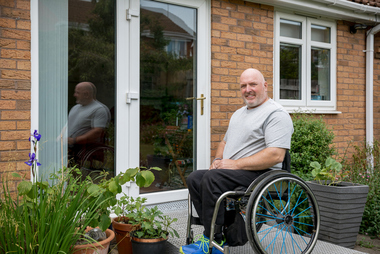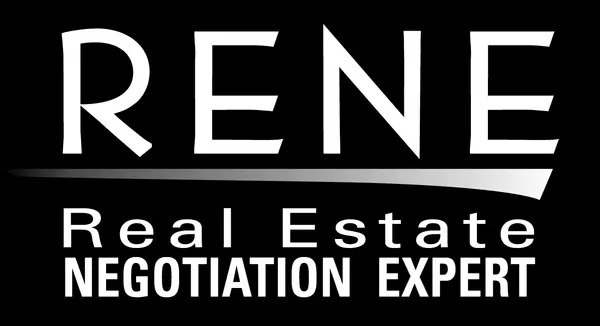

Accessible Living: Renovation Tips
When renovating a home to make it more accessible for individuals with injuries or disabilities, there are several important considerations to remember. Read more for five renovation tips to help improve accessibility.... If you want to age in place or have a disability that requires modifying your home to make your life easier and more comfortable, you must learn about accessible living. When renovating, you'll want to consult professionals specializing in universal design or accessibility modifications. They can provide expert advice tailored to your needs and ensure the renovations meet safety standards and regulations. Here are the basics you'll want to consider for your accessible renovation: Widen doorways and remove barriers Widening doorways is crucial for accommodating mobility aids such as wheelchairs and walkers. Aim for a minimum width of 32 inches for doorways throughout the home. Additionally, consider removing barriers like steps or raised thresholds by installing ramps or lifts to ensure easy and safe movement between rooms and various levels of the house. Install grab bars and handrails Adding grab bars and handrails in slip-prone areas such as bathrooms, staircases and hallways can significantly enhance safety and stability. Install grab bars near toilets, showers and bathtubs to assist with sitting, standing and balance. Sturdy handrails along staircases can provide support and prevent falls. Use accessible bathroom features Bathrooms are essential spaces to focus on for accessibility. Consider installing a walk-in shower with a bench or built-in seating, handheld showerheads and slip-resistant flooring. Install lever handles instead of knobs on faucets and door handles for more effortless operation. Ensure there is enough space to maneuver a wheelchair or mobility aid comfortably around the room. Adapt the kitchen Make the kitchen more accessible by considering features such as lowered or adjustable-height countertops to accommodate individuals who use wheelchairs. Install pull-out shelves and drawers for easier access to storage. Ensure that kitchen appliances like stoves and sinks have controls and handles that are easy to reach and operate. Improve lighting and eliminate tripping hazards Adequate lighting is important for individuals who are visually impaired or have mobility challenges. Install bright, even lighting throughout the home, including in hallways, staircases and entryways. Eliminate tripping hazards by making sure floor surfaces are even, removing loose rugs and securing electrical cords. Are you looking for a more accessible home? Call me to learn more. Used courtesy of Carol Kerner-Odgis, Home Actions, LLC
Read More

Making The Right Offer
You’ve found your dream home and been preapproved for a mortgage, and now you’re ready to make an offer on the property. But how big of an offer should you make? Click through for some insights into getting started on a negotiation. Should you make a full-price offer, one equal to the home’s listing price? Or should you offer $10,000 less? That depends largely on the real estate market of the neighborhood you are in and the season of the year. (Yes, the real estate market is seasonal.) How do you make an offer? Once you find a home that fits your needs, you’ll work with me to make an offer on that property. Say the sellers are listing the home for $550,000. You might make a full-price offer for that amount. Or you might try to negotiate a lower sale price, perhaps offering $530,000. Your real estate agent will submit your offer to the agent representing the sellers. The sellers can then accept the offer, reject it or come back with a counteroffer. That third option is a common one. Say you offer $530,000. The sellers might counter, asking for a final sale price of $540,000. In either case, if your offer is so low to begin with the seller might feel insulted and then might end negotiations, thinking that you and they will never reach an agreement. Sellers do not have to accept an offer under list price and most sellers are especially reluctant to do so when inventory levels are low in their metro area. You then have the option to accept the counteroffer, reject it outright or make another offer. In this case, you might offer $535,000. These negotiations continue until either you and the sellers agree on an offer or one side cuts off the negotiations and walks away from the deal. What should you offer? How much should you offer on a home for sale? There is no one answer to that question. It’s important, though, to understand the demand for homes in your market and how long homes have been on the market in that area. Generally. if homes have been on the market less than a month sellers are less willing to negotiate. If homes are selling quickly and often fetching full-price offers, you might offer the sellers their full asking price or more. This is especially important if homes often attract more than one bidder. If you make an offer $20,000 under the sellers’ asking price and another bidder makes a full-price offer, you might lose your chance to buy the home. But if home sales have slowed down in an area, you might have more room to negotiate on the sale price. Maybe the sellers have had their property on the market for several months without receiving offers. They might be more willing to accept an offer under their listing price. Other factors Price isn’t the only factor when making an offer. You can also negotiate the date on which the sellers will move out or offer a post occupancy agreement if the seller's need more time to find a home. You might ask, too, for the sellers to leave certain items behind when they move. Maybe there’s a swing set in the backyard that you know your children will love. You can ask in your offer that the sellers leave that set behind. The key is to make a fair offer. Your goal is to not overpay for a home. But you don’t want to insult the sellers, either, by making an offer that is too low. I will help you understand the best way to handle the offer in order to make a fair offer along different steps of the transactions and even BEFORE you setup showings. I will also reach out to the sellers agent to help you decide if their is any contingencies or factors important to the seller that will help you before even submitting an offer. This knowledge can help you make an offer that increases your odds of landing your dream home! Modified by: Theresa Tscheschke Gunal ; Used courtesy of Carol Kerner-Odgis, Home Actions, LLC
Read More

Ways Artificial Intelligence is Used in Real Estate
When you see an estimate of a property value, it’s generally based on predictive analytics from artificial intelligence. Automation with AI has the potential to manage workflows, analyze markets and generate reports to track market performance. Among its applications are: -Generating appraisals and estimates. These have traditionally been based on neighborhood comparisons and human opinion. Zillow says it uses AI for its property valuation estimates, as well as for providing floor plans and photos. Automated valuation models value properties based on data and images. Creating 3D models of properties for potential buyers to use any connected device — such as a smartphone or tablet — to get a sense of how they look. A lifeline during the pandemic when sellers were reluctant to have buyers in their homes, 3D home models have continued to grow in popularity. Matterport creates 3D virtual tours of properties using augmented reality before buyers visit. Some companies are using AI matchmaking tools in property recommendations, partnering with ChatGPT and using a chat-based search plugin to help buyers find homes. Informing landlords of any problems through smart sensors/monitors for thermostats, including cameras to show a plumbing leak. Smart home devices help notify people of any problems inside the property. AI helps devices learn user preferences and adjust settings for utilities, improving tenant satisfaction and helping landlords stay up to date and avoid major repairs. At least one company is saying AI facilitates communication between property maintenance teams and renters, using speech recognition to transcribe maintenance calls and tagging them for prioritization. AI can activate lights in communal hallways with motion sensors, so they’re not left on when no one is there. Assisting in property management. AI helps managers screen tenants, collect rent and schedule maintenance. Chatbots can answer questions about rental rates and availability, as well as guide customers through the application process, alleviating some of the work of human agents. AI-assisted apps include processing payments, tracking leasing performance and improving occupancy and operational efficiency. Aiding finance companies in decision-making, including mortgage approvals. In underwriting, AI is used to analyze borrower information, including credit scores, income and employment history, so a borrower’s profile can be evaluated to offer the best rate to charge. AI automates loan servicing, including customer communication. Finance companies are already using AI to deliver near-instant decisions on mortgage applications. Underwriting decisions are rooted in AI’s risk calculations. Take a long view Though the many upsides look promising, there are always risks. The industry has and will have to put more safeguards in place to prevent AI technology from misleading consumers. The National Association of Realtors® and the local boards work hard to educate consumers and Realtors® alike the challenges of AI and how to overcome them. For property evaluations especially, these AI generated reports don't always accurately reflect the seasonality of real estate market, nor do they get right the neighborhood characteristics and ammenities that affect better valuation of a home. Tenants may not want their property monitored. Landlords should have a dialogue with their tenants so everyone's concerns are considered. And AI doesn’t get everything right. For instance, it may switch off a service, such as heating, when it is needed. Tenants must have the option to override AI when necessary. For now, whatever your position is in real estate, work closely with a me as your real estate professional to help you understand how AI might be involved in the transaction and what to watch out for with it. Modified by: Theresa Tscheschke Gunal ; Used courtesy of Carol Kerner-Odgis, Home Actions, LLC
Read More

How Much Home Can You Afford...Realistically?
You're ready to buy a home. The problem? With interest rates higher than you are comfortable with you're still not sure how much of a home you can afford. Keep reading to learn how to budget so that you end up with a short term monthly mortgage payment that won't cause you financial pain while you work on your long term plan. If you're like many Americans, your home will be the most expensive thing you own. It will be a key part of your estate as you plan for the long term. So you need to think strategically from the outset. To start with, one of the first steps is to talk with a mortgage lender and find out how much they think you can handle. You do not need to be ready to get preapproved to have this critical conversation. But pre-approval for a mortgage will be important before you start shopping for a home. What is preapproval? That's when you work with a mortgage lender to determine how large of a loan that lender is comfortable giving you. To begin, you'll provide a lender with copies of your last two paycheck stubs, last two months of bank account statements, last two years of tax returns and last two years of W-2 forms. Lenders will study these forms to verify your monthly income. They'll also check your credit to determine how well you've paid your bills and managed your debt in the past. Armed with this information, lenders will provide you with a preapproval letter stating how much of a mortgage you can qualify for. For instance, your lender might determine that it is comfortable giving you a mortgage of $400,000. Once you have this letter, you can shop for homes that you know you can finance. You won't waste time looking at $500,000 homes if you are only qualified for a mortgage of $400,000. The good news is you won't have to pay for getting a preapproval! You only pay a lender after that lender originates your mortgage loan and you sign the closing documents. You also are not required to apply for your mortgage with a lender that has given you a preapproval letter! You can still shop around with different lenders. Know the Market One thing that might be holding you back from purchasing is the rising costs of homes in your area. While this will likely be the case for even longer, it is still possible to find a mortgage that has flexibility built into it to help defer some of these higher costs. But how much are you comfortable paying each month? Knowing how much a lender is willing to lend you is one thing. Being comfortable with the size of a monthly mortgage payment is another. You will also want to consider other home expenses such as home repairs and remodels if you don't plan on buying a turn-key home. While these expenses can add up quickly having this information in mind up front can help you in the future. Just because a lender will approve you for a mortgage of, say, $375,000, doesn't mean that you'll be comfortable making the monthly payments that come with a loan of that size. Most lenders say that your total monthly debt, including your new estimated mortgage payment, should equal no more than 43% of your gross monthly income, which is your income before taxes are taken out. There is many calculators available out there that can help you determine these factors beforehand. Reach out if you would like help finding one. Know your budget But even the debt to income ratios are a guideline, and not a hard-and-fast rule. You might not want to spend 43% of your gross monthly income on debt payments. You might feel more comfortable spending 36% or less of your income. The key is to create your own household budget, listing your monthly expenses and income. Make sure to include expenses that vary each month, such as your utility bills, medical expenses, groceries and gas costs. Include too, discretionary spending, estimating how much you spend each month on eating out, going to the movies, shopping and other entertainment expenses. Once you've calculated this, you can see how much money you have available to spend each month on your mortgage payment. Be careful not to take out a mortgage that will result in a monthly payment that will consume all your extra cash. You don't want paying your mortgage bill to be a financial burden each month. Only you can determine how large of a mortgage payment you are comfortable taking on. Considering the 43% debt-to-income rule and getting preapproved can help you make that decision. But drafting a budget to determine exactly how much extra money you have each month is a key step that you should never skip. Modified by: Theresa Tscheschke Gunal ; Used courtesy of Sarah Tanggo, Home Actions, LLC
Read More
Categories
- All Blogs (36)
- Buying (3)
- Closings (1)
- Colorado (7)
- Condo's and Co-op's (2)
- Curb Appeal / Outdoor (1)
- Extended Stay Living/ Furnished Rentals (1)
- HOA's (2)
- Home Improvement (1)
- Home Repair (1)
- Inspections (1)
- Insurance (2)
- Interior Design / Staging (2)
- Monthly News (6)
- Mortgages (2)
- Moving (1)
- New Builds (1)
- Property Taxes (1)
- Remodeling (4)
- Retirement/ Adult Communities (2)
- Selling (1)
- Taxes and Investing (1)
- Title (1)
- Transaction Process (1)
- Vacation / Holidays (1)
- Your Home is Your Biggest Asset - Financial Goals (6)
Recent Posts










SUBSCRIBE TO MY NEWSLETTER
Subscribe today to get real estate news you can use delivered to your mailbox biweekly on Thursdays!
GET MORE INFORMATION

Theresa Tscheschke Gunal
Broker Associate | License ID: FA.100087128
Broker Associate License ID: FA.100087128
